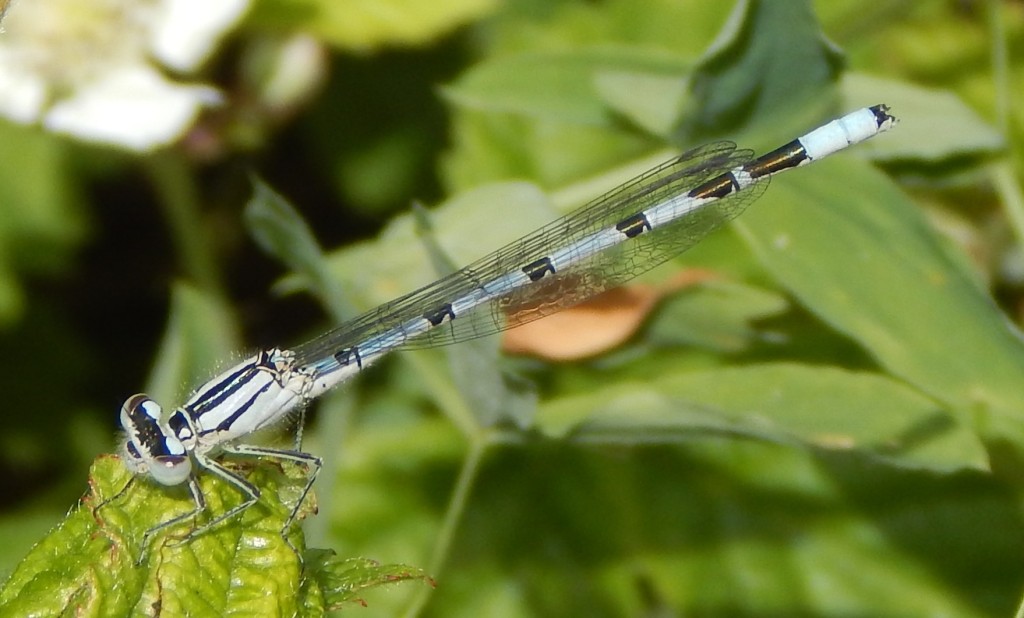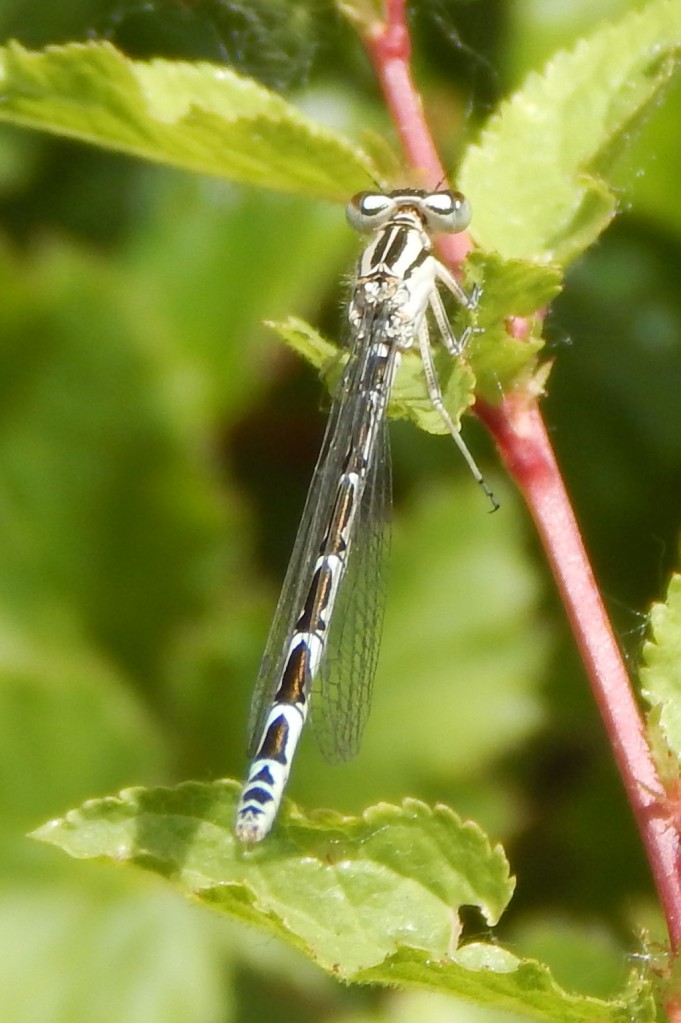
[126] Enallagma cyathigerum, Common Blue Damselfly
Introduction
Enallagma cyathigerum, the Common Blue Damselfly, is a common and widespread damselfly. Only the male is bright blue and there are several other very similar species.
It is also known as a Common Bluet or Northern Bluet. All species of Enallagma are known as Bluets and so are the confusingly similar Coenagrion species.
In context it is often called just a Common Blue when there is no confusion with [275] Polyommatus icarus, a butterfly also known as the Common Blue.
Taxonomy
Kingdom – Animals
Phylum – Arthropods
Class – Insects
Order – Odonata
Suborder – Zygoptera (Damselflies)
Superfamily – Coenagrionoidea
Family – Coenagrionidae (Narrow-winged Damselflies)
Genus – Enallagma
Scientific Name – Enallagma cyathigerum
Name
Enallagma comes from the Greek enallagma meaning (risk of) confusion because of the many confusingly similar damselfly species. Cyathigerum comes from Greek cyathos meaning cup, with the Latin ending -gerum, so it means cup-bearing, from the cup shaped marking that distinguishes this species.
(Thanks to www.dragonflypix.com/etymology.html for an extensive section on the names of dragonflies and damselflies.)
Description
The family Coenagrionidae contains over a thousand species of similar damselflies, sometimes called Pond Damselflies. All have narrow wings and a single colour marked with black patterns.
The male Common Blue is blue with black markings. It is often found in the same locations as its relative [087] Coenagrion puella, the Azure Damselfly. There are identifying differences in the side of the thorax (with a thicker black stripe for Azure) and the back of the second abdominal segment. I could try to convince you that I am an expert but, after hours of trying to understand several Field Guides and identification sources, I can’t really tell the difference. I am reliably informed from social media sites that my pictures are Common Blue. This is a male.

Females are more difficult to identify. They come in different colours but may be similar to the males. (The header picture is a female.)




These damselflies spend most of their life as larvae. This could be for a year or up to four years in colder climates further North. They can go into diapause, which is a form of hibernation.
They mate using a mating wheel where the male clasps the female by the neck and she loops her body.


They stay together until the female lays her eggs in vegetation just below water level.
Habitat
The Common Blue is found over Eurasia and northern Africa and its range includes all of the British Isles.
Larvae inhabit a variety of freshwater habitats.
Other Notes
I could say that I see a lot of these by a local unused canal. More precisely, I see lots of blue damselflies that are probably either Common Blue or Azure!
See also
Still to come are [186] the Blue-tailed Damselflies and [289] Large Red Damselfly.

Pingback: [275] Polyommatus icarus | The Species of Britain